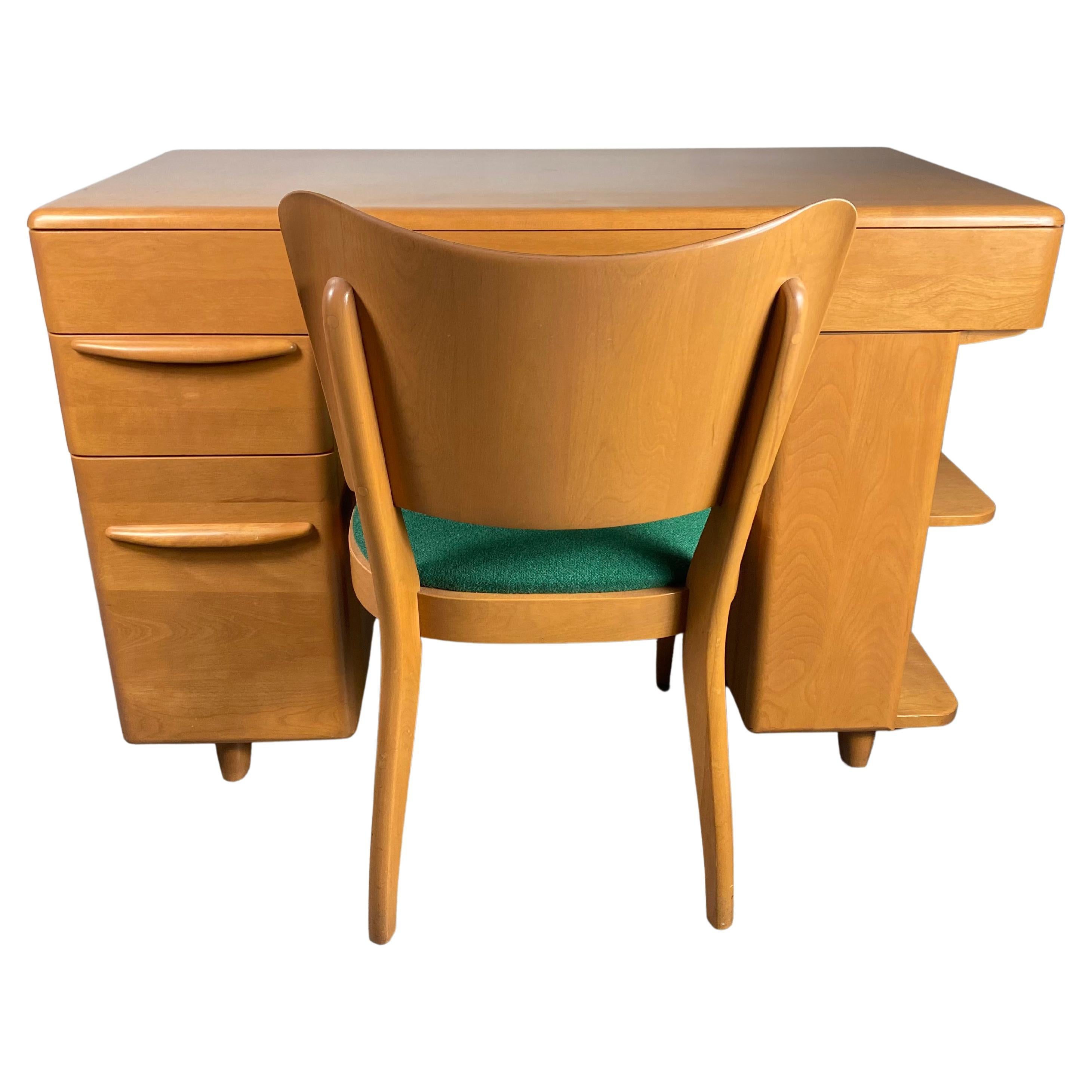Heywood Wakefield Desk & Chair: Heywood Wakefield Desk And Chair

Heywood-Wakefield, a prominent name in American mid-century modern furniture, produced a wide range of desks and chairs that are highly sought after by collectors and enthusiasts today. Their designs, characterized by clean lines, functional simplicity, and high-quality craftsmanship, reflect the broader aesthetic shifts of the era. This discussion will delve into the historical context of Heywood Wakefield desks and chairs, exploring their evolution, materials, design aesthetics, and key milestones in their production.
Heywood Wakefield Desk and Chair Design Evolution
Heywood Wakefield’s desk and chair designs evolved significantly throughout their production history, reflecting changing tastes and technological advancements. Early designs, produced in the 1930s and 40s, often featured more traditional elements, with slightly heavier construction and more ornate detailing. As the mid-century modern style gained traction, their designs became increasingly streamlined and minimalist. The post-war boom fueled a demand for affordable, yet stylish furniture, and Heywood Wakefield responded with innovative designs that utilized efficient manufacturing techniques and readily available materials. Later designs, particularly those from the 1950s and 60s, embraced the clean lines and functionality that defined mid-century modern aesthetics. This evolution is visible in the simplification of joinery, the reduction of ornamentation, and the increasing use of lighter-colored woods.
Wood Types and Finishes
Heywood Wakefield utilized a variety of wood types in their desk and chair production, with birch and maple being particularly prevalent. Birch, known for its strength and relatively light color, was often used for the frames and structural components. Maple, prized for its hardness and smooth grain, was also a popular choice. Other woods, such as walnut and oak, were used less frequently but added a touch of richness and warmth to certain designs. Finishes ranged from simple clear coats that highlighted the natural beauty of the wood to more vibrant colors, reflecting the broader palette of mid-century modern design. Common finishes included various shades of lacquer and stain, often applied to create a smooth, durable surface.
Comparison with Other Mid-Century Modern Manufacturers, Heywood wakefield desk and chair
Compared to other mid-century modern manufacturers, Heywood Wakefield furniture occupies a unique position. While sharing the clean lines and functionality common to the style, Heywood Wakefield often exhibited a slightly more restrained aesthetic than some of its contemporaries. For example, compared to the bolder designs of Eero Saarinen or the more playful forms of Charles and Ray Eames, Heywood Wakefield’s designs tended towards a greater sense of understated elegance. However, they shared a commitment to quality materials and craftsmanship with other high-end mid-century modern brands, differentiating them from mass-produced furniture of the time. Their designs often incorporated simple yet effective details, such as tapered legs and subtly integrated hardware, which contributed to their overall sophistication.
Heywood Wakefield Desk and Chair Production Timeline
The following table highlights significant milestones in Heywood Wakefield’s production of desks and chairs:
| Year | Model Name | Notable Features | Image Description |
|---|---|---|---|
| 1940 | Early Birch Desk | Simple design, sturdy construction, slightly more ornate detailing than later models. | A light-colored birch desk with slightly tapered legs and simple brass hardware. The desk features a relatively large writing surface and two drawers. The overall style is functional and slightly traditional. |
| 1950 | “Precedent” Desk | Streamlined design, tapered legs, clean lines, minimal ornamentation. | A sleek, mid-century modern desk made of light-colored wood with tapered legs. The desk is characterized by its minimalist aesthetic, with a clean, uncluttered design. The wood grain is visible, enhancing its natural beauty. |
| 1955 | “Captain’s” Chair | Simple, comfortable design, often paired with desks. Tapered legs, slightly curved back. | A simple chair made of light-colored wood, with tapered legs and a slightly curved back. The chair is comfortable and functional, with a clean and minimalist design. The wood is smoothly finished, giving it a refined look. |
| 1960 | Modern Desk with Pedestal Base | Pedestal base design, ample storage, clean lines. | A desk with a pedestal base, providing ample storage space. The design is clean and minimalist, reflecting the late mid-century modern style. The desk is made of light-colored wood with a smooth finish. |
